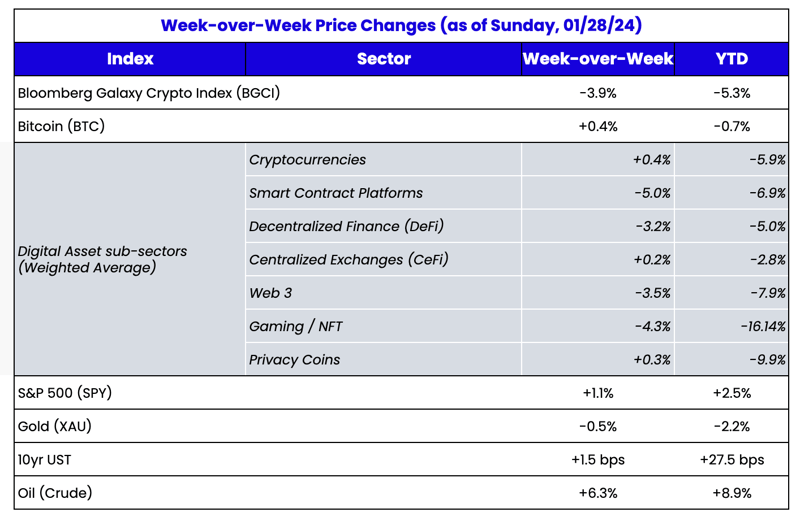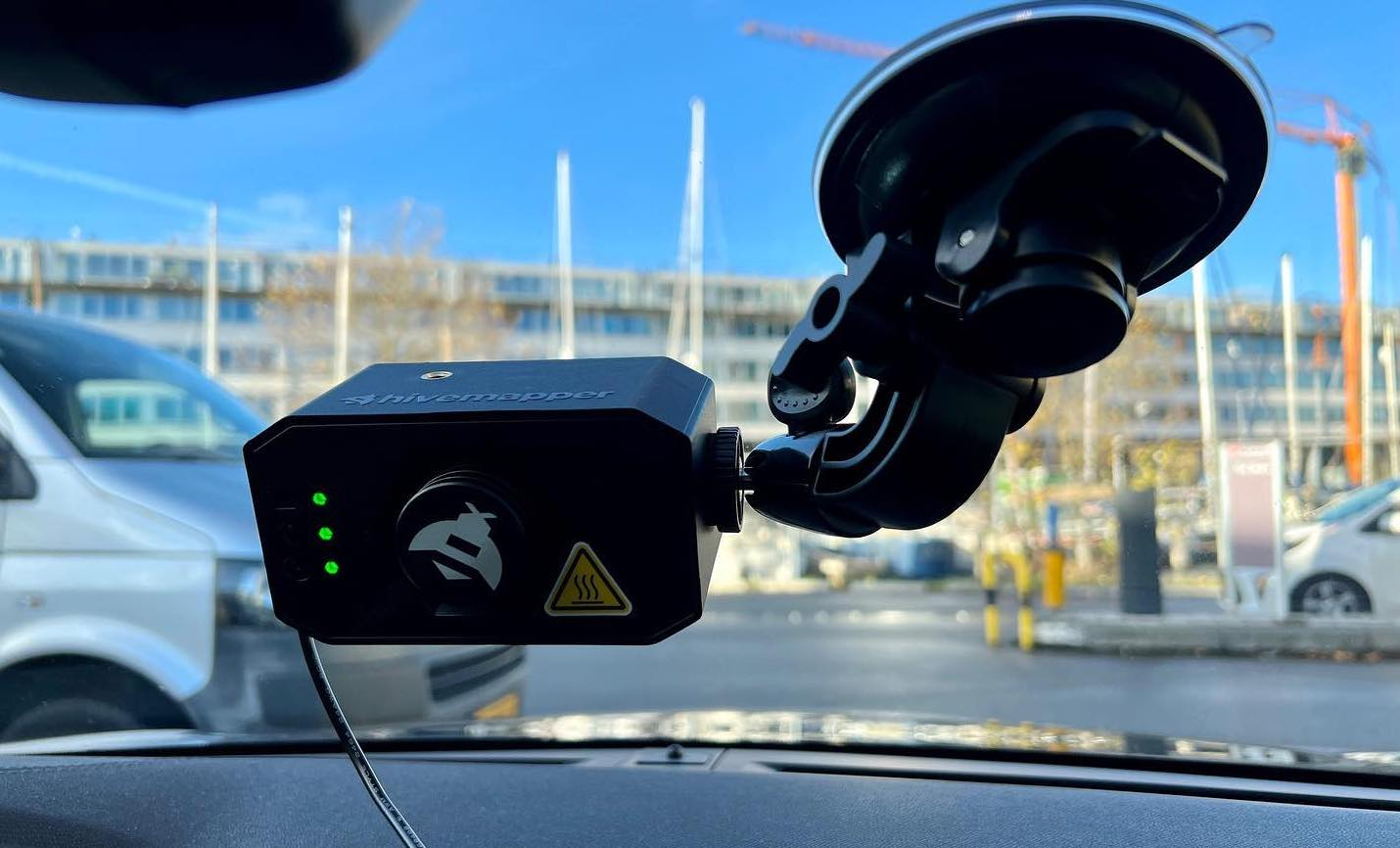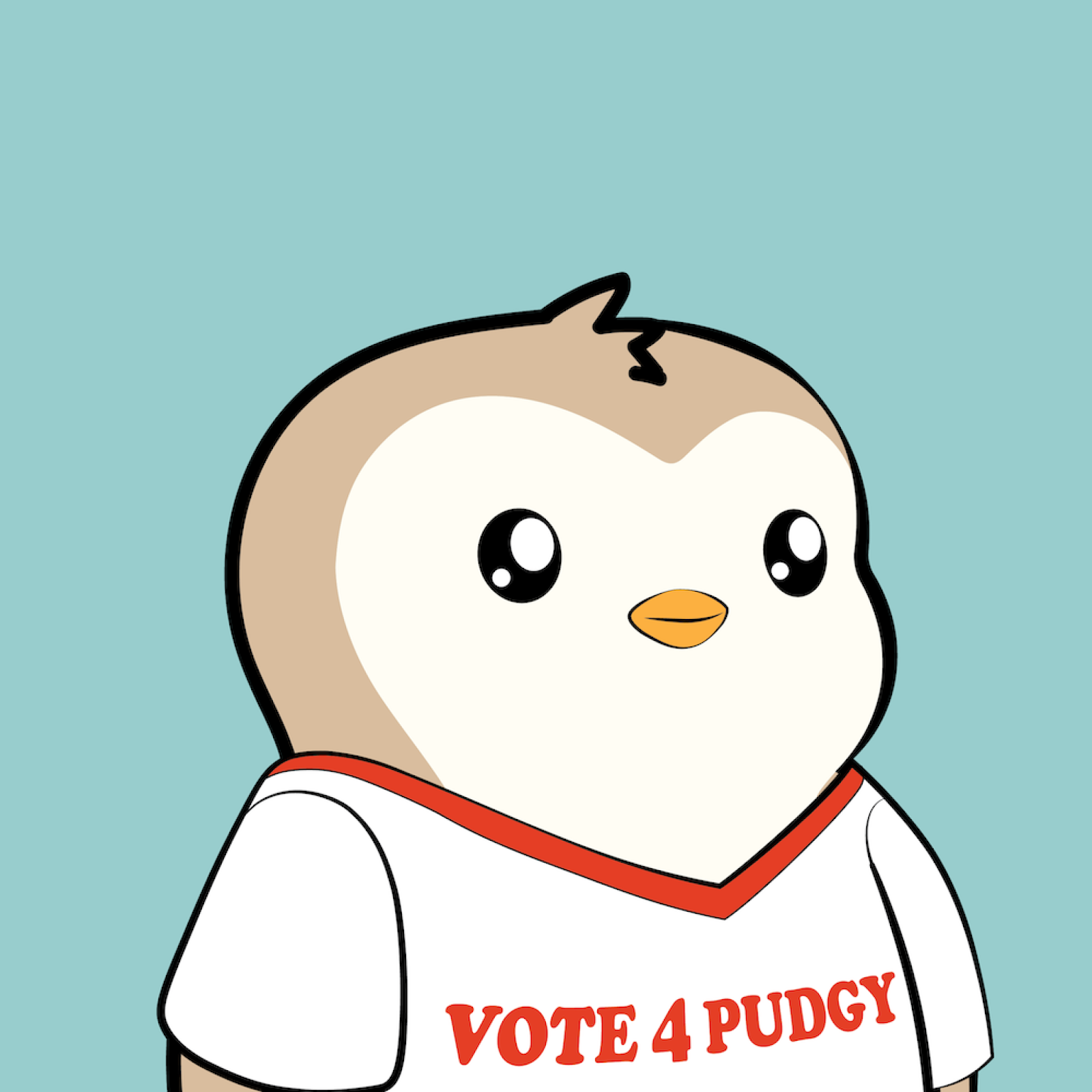

Source: TradingView, CNBC, Bloomberg, Messari
Coordination Bandwidth
In a
recent episode of the Bankless podcast, Eigenlayer founder, Sreeram Kannan, made an interesting analogy. He called the space on a blockchain “Coordination Bandwidth”, explaining that blockchain ledgers allow for coordination across various parties that previously were unable to trust one another. While we are able to coordinate a few important things like who the president is or what the laws are- Sreeram argues that in the grand scheme of things, our bandwidth for coordination is still tiny, probably measured in bytes/year. This hardly even registers compared to the 300,000,000+ bytes/second of your internet connection. In other words, the amount of information that we can actually all agree upon in any given year is very small relative to the total amount of information we process and consume. However, blockchains can dramatically extend our capabilities to coordinate.
While those in the industry often think of Ethereum as the rather slow and stodgy grandpa in the crypto space, it’s worth stepping back and reexamining this framing. Ethereum currently processes around 80,000 bytes/second of data - a small number relative to what your computer is currently using reading this article, but quite large in the context of the amount of information it allows people to agree on. With new technologies for scaling blockchains, like Eigenlayer’s data availability layer, we could see them being able to process 1,000,000,000 bytes/second of coordination bandwidth in the next few years.
Polychain Capital founder Olaf-Carlson Wee has also talked for years about the coordination mechanisms blockchains enable, which may be the ultimate unlock from this technology. Recently on
Unchained, he discussed his realization that blockchain networks have such powerful incentives that he, himself, essentially “works FOR Bitcoin (the network)”. While this resonated with me and probably does with many in the space, it likely sounds zany for skeptical people. I feel for him - Olaf-Carlson Wee has been telling this story for a decade, but unfortunately, for the most part, there haven't been many successful examples of the coordination facilitated by these networks leading to real-world use cases.
I believe we’re finally reaching the point where regular people can start seeing the value of the coordination bandwidth. Almost as much as I work for Arca, I also work for these crypto networks, collaborating with thousands of people I have never, nor will ever, meet. By allowing a bunch of people worldwide who don’t know or trust each other to coordinate, it turns out you can do some pretty cool stuff.
I Work For Hivemapper (HONEY)
Hivemapper is a global mapping network in which contributors to the network record, analyze, and curate a map of the world. In less than a year of existence, the network has mapped over 10% of the world’s roads with over 30,000 individuals contributing.
The map is created by people with cameras mounted to their dashboards which provide image and location data to businesses across various use cases. Drivers currently purchase dashcams from Hivemapper Inc. (currently $300 a pop and severely backlogged). By providing data to the network, contributors receive HONEY tokens. Hivemapper then sells API access to this map, letting companies leverage its data to build other products and services. To use the API, data credits are needed, which can only be accessed by burning HONEY tokens. Hivemapper Inc. sells API access B2B using fiat but uses the Hivemapper protocol on the backend, so the need to use HONEY or crypto wallets is abstracted away from the user. Said another way, Hivemapper is using blockchain without the end consumer even knowing or caring crypto is involved.
 Source: Hivemapper Dashcam
Source: Hivemapper DashcamMy initial impression upon finding Hivemapper, and even well after using the dashcam for months, was that the project was essentially just a competitor with Google Maps, a well-liked and monopolistic product that I thought had very little chance of being unseated by some random crypto project. I failed to understand the critical unlock that a digital coordination network enables for maps - freshness.
The average kilometer of road mapped by Hivemapper has been tracked more than 10x by the network and many times per day in big cities. Compare this to Google, which may only update once every few years, especially in rural areas. This freshness has potential uses in areas where a product like Google Maps cannot provide the required information. Some applications can include:
- Assisted autonomous driving - providing fresh location-specific data to vehicles on road conditions, construction, closures, etc. Stale data might be dangerous or lead to broken traffic laws.
- Property assessment, valuation, and insurance - providing up-to-date imagery to property owners, investors, analysts, and governments on the condition of real estate, infrastructure, billboards, etc.
- Training AI vision models (models that interpret what is going on in an image) - selling data to AI model builders with fresh, replicated data models to better interpret the image. Hivemapper may have images for an area in morning and afternoon glare, in rain, snow, and sunny conditions, etc.
- Regulatory compliance - EU regulations require automakers to provide alerts in new cars when they exceed the speed limit, but companies have a hard time interpreting local locations and speed limits across member countries without fresh maps.
- Last mile delivery assistance - maps can provide trucks with turn-radius assistance, parking information, vertical clearance information, and more.
The dashcam takes almost no effort to maintain and essentially runs in the background whenever there is light out. People can also contribute to the map by helping train the AI algorithms (shown below). In fact, starting this week, contributors can
use the mobile app to mark areas of construction and road closures.
 Source: AI Training Interface
Source: AI Training Interface
Hivemapper has effectively created a new business model leveraging the tokenization, instant settlement, and trustless interactions enabled by blockchains. Contributors like me not only get financially rewarded today, but get a quasi-equity stake in the form of HONEY tokens. This is a key differentiator from a business model like Uber that brings together contractors but doesn't provide them a stake. While contributors to both Hivemapper and Uber have a disincentive to bring in new contributors nearby that will reduce their personal earnings, only Hivemapper contributors have an incentive to grow the network overall in order to increase the value of their HONEY tokens. This improved model increases the willingness of participants to evangelize the project, especially in its early stages. The upside also makes people like me, who would not normally be that interested in contributing to something like this along with my full-time job, much more willing to do so.
I Work For Pudgy Penguins
Pudgy Penguins is a global crypto-native brand that began as an 8,888-piece generative NFT mint but has morphed into something much bigger. Their current CEO, Luca Netz, acquired the rights near the bottom of the bear market and has been relentlessly building the brand ever since. With over 1.2 million followers on Instagram, tens of millions of dollars in toy sales, and a recent feature on the front page of
Walmart.com, he has been relatively successful to date.
When I buy a Pudgy Penguins toy for my house or a coffee mug for my office (both extremely cute), I contribute capital and attention to Pudgy Penguins. This isn’t much different than buying a Nike shoe or Prada bag. The difference lies in the coordination incentives. While people may love their Jordans, they lack the financial incentive to evangelize them. In other words, they are a customer but not a co-owner. NFT-based brands flip that logic on its head, turning their customers into partners who have a chance for financial upside based on the network’s success. So when I’m eyeing that Penguin beanie, the price is a bit further in the back of my mind because I know the brand's success can also mean financial success for me.
As an NFT holder and a confused citizen of the SEC’s jurisdiction, I have no expectation of a return on investment from Pudgy Penguins - no one will ever get dividends on their Penguin NFTs. In fact, I’ll never get any financial compensation from the Pudgy Penguins company for their success (though
licensing the NFTs is now an option). I rely entirely on people thinking Pudgy Penguins will be cooler tomorrow than they are today, and NFTs transmute this social capital back into the financial.
 Source: Too Adorable To Be An Unregistered Securities Offering
Source: Too Adorable To Be An Unregistered Securities Offering
You might think this quasi-financial relationship between the brand and me is rather cold and transactional, unlike the organic relationship that springs up when a customer loves a product. I feel it's quite the opposite. To me, rooting for Pudgy Penguins feels a lot like rooting for my home sports team. In fact, since my team is the Green Bay Packers, it's more similar than you might imagine.
For those unfamiliar, the Green Bay Packers are the only team with a public ownership structure in the National Football League. The Packers are owned by 537,460 stockholders with no shareholder allowed to own more than 4% of the shares outstanding (how’s that for decentralized!). While called A “stock”, owners have no equity interest, no dividend rights, no protections or regulations under securities law, and cannot trade their “stock” with a 3rd party. You might argue these shares are valueless, but I personally have a fair number of family members and friends who have spent real money on these worthless pieces of paper. It’s not hard to imagine that if the Green Bay Packers shares were tradable, they would rise in value if the team won the Super Bowl (currently manifesting this for 2025). For all intents and purposes, shares in the Green Bay Packers are just non-transferable NFTs that provide social capital based on the success of the Green Bay Packers brand.
Even before the recent strong price performance during the depth of the bear market when it wasn’t clear the brand would survive, NFT holders showed immense loyalty to Pudgy Penguins. One emotional Twitter Spaces from mid-2021 saw a holder in tears over its impact on his life and spawned the community rallying cry “
I am my Penguin, and my Penguin is me”. Pudgy Penguins and other NFT brands like Kanpai Pandas and Azukis have created new business models in which stakeholders participate financially in the brands' success, creating more powerful organic evangelization than any paid influencer could achieve. And they’ve done it with a simple token mint built on a digital coordination network.
(Notice how I spent the last six paragraphs writing at my civilian job with Arca while working for Pudgy Penguins).
Digital Coordination Networks
I’ll never get a W-2 from Hivemapper or Pudgy Penguins, but in many respects, I now work for these entities in a small but very real way. By giving me a financial incentive, I am happy to contribute, spend money on, and evangelize these projects that enable real-world use cases. Arca’s own CIO, Jeff Dorman, wrote about the future of blockchain-based incentives
before Arca even had a website, discussing how the old world lacks proper incentives and coordination between customer and owner. Crypto coordination was always the vision, but we’re just now starting to see it play out with real success stories.
The crypto industry has been dominated by infrastructure building over the last few years, which has provided greater coordination ability - upgrading our coordination bandwidth from kilobytes to gigabytes. In its wake, we are seeing some of the first crypto-native business models emerge, previously impossible models without blockchains.
I’ve never met anyone else who contributes to Hivemapper and maybe just a handful of other Pudgy Penguin NFT holders, but even so, I rely on them every day to add value to their respective networks. Fortunately, blockchains give them the same financial incentive they give me, so without any threat of violence, without any HR team, and without any trust whatsoever, I know we can coordinate and build some awesome stuff together. That’s pretty incredible if you ask me.


